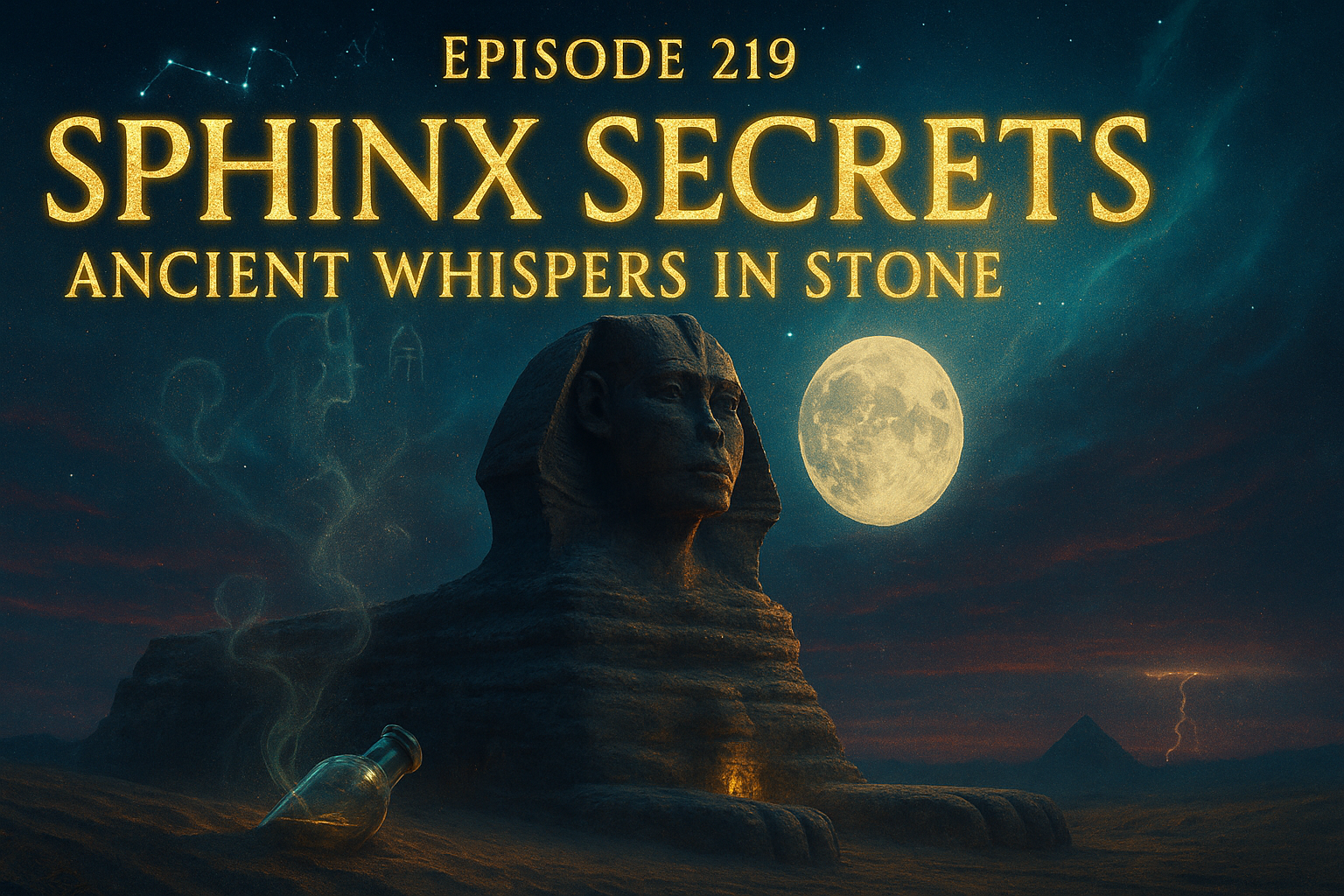Blog Post: Unraveling the Sphinx’s Ancient Secrets

Author: ✍️ Juniper Ravenwood
🦁 The Enigma of the Great Sphinx
Beneath the scorching sands of the Giza Plateau 🏜️, the Great Sphinx sits like a silent sentinel, its weathered gaze fixed on the horizon 🌅. For centuries, it’s been hailed as a masterpiece of ancient Egypt, carved around 2500 B.C. under Pharaoh Khafre.
But what if that’s only part of the story? In Episode 219 of The Shadow Frequency, “Sphinx Secrets: Ancient Whispers in Stone,” we dive into a chilling mystery 🕵️♂️ that suggests the Sphinx is far older—and far stranger—than history books claim 📚.
The stone itself seems to whisper a different tale, one of forgotten civilizations, cosmic alignments, and perhaps even visitors from the stars 🌌.
🌧️ Water Erosion: A Clue from a Lost World
The first crack in the official narrative comes from the Sphinx’s surface. Deep vertical grooves, rounded edges, and scalloped walls scar its limestone body—marks that scream water erosion 💦.
Not the kind from wind or sand, but from heavy, relentless rainfall ⛈️. Here’s the eerie part: the Giza Plateau hasn’t seen that kind of climate in over 9,000 years.
Researchers like Dr. Robert Schoch and John Anthony West argue this could place the Sphinx’s creation between 7,000 and 10,000 years ago, when the Sahara was a lush, green landscape 🌳.
If true, the Sphinx was already ancient when the first pharaohs rose to power 👑. Who carved it in a time before recorded history? And why? 🤔
👁️ A Non-Human Architect?
The Sphinx’s proportions only deepen the mystery. Its massive leonine body dwarfs its oddly small head, leading some to speculate it was recarved—perhaps multiple times 🪓.
Was the original head that of a lion, tying it to the constellation Leo ♌? Or something else entirely?
Ancient-astronaut theorists like Zecharia Sitchin point to Sumerian texts describing the Anunnaki, “gods from the sky” who shaped early humanity 👽.
Could the Sphinx be their monument, its original face a portrait of a being neither human nor animal? The thought sends shivers down my spine 😨, imagining a civilization—or something else—leaving their mark on Earth’s cradle 🌍.
🌠 Cosmic Connections and Hidden Chambers
The Sphinx doesn’t just sit there; it’s aligned with purpose. Facing east, it locks eyes with the equinox sunrise 🌞, and some, like Graham Hancock, argue it’s tied to the constellation Leo as it rose around 10,500 B.C.
This cosmic precision suggests a culture with advanced astronomical knowledge 🔭, far beyond what we credit to ancient peoples.
Then there’s the tantalizing legend of the Hall of Records, a subterranean vault beneath the Sphinx’s paws 🐾 said to hold the wisdom of a lost world 📜.
Seismic scans in the 1990s detected voids underground, but mainstream scientists caution these could be natural cavities. Still, the possibility of ancient texts or artifacts waiting in the dark is hard to dismiss 🕳️.
🗿 A Message in Stone
What is the Sphinx trying to tell us? 🌀
Is it a relic of a human civilization we’ve yet to uncover, or a marker left by beings from another world? 🌌
Its silence is deafening 🤫, but its presence feels like a challenge—a code etched in stone, daring us to ask the right questions ❓.
As we explored in Episode 219, the Sphinx guards its secrets tightly, but every groove, every alignment, every whisper of myth pulls us closer to the truth 💫.
Or perhaps… it’s warning us to stop digging 🕳️👀.
📻 Join the Exploration
Join us on The Shadow Frequency as we continue to explore the unexplained 🌒.
Share your thoughts at shadowpodcast@protonmail.com, and follow us on Facebook, YouTube, and TikTok.
Visit shadowfrequencypodcast.com for more strange cases 👻.
Until next time, keep listening for the whispers in the shadows 🌬️.
Signed,
✨ Juniper Ravenwood























